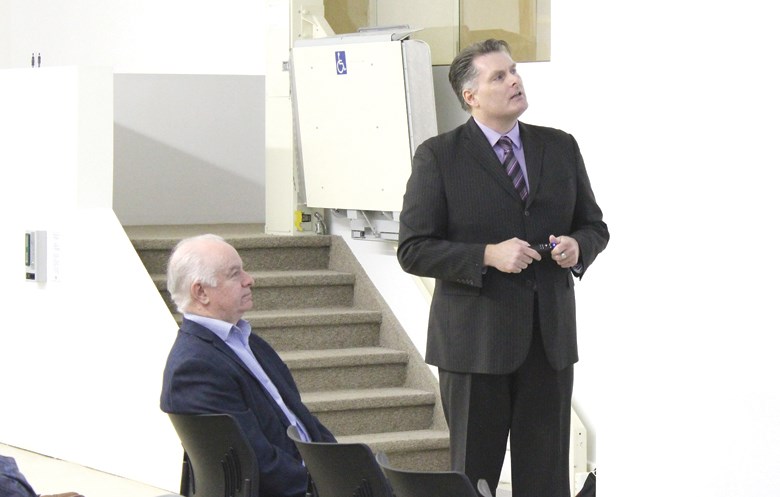When Royce Pettyjohn was given the job of community and economic development for Maple Creek in 2011, things were looking pretty bleak in his hometown of around 2500 people in southwestern Saskatchewan.
During a presentation last week at Yorkton’s historic land titles building, formerly the Yorkton Sports Hall of Fame, Pettyjohn recalled the type of feedback he would receive at that time.
“I drive through Maple Creek every year, and every year it gets a little bit more run down looking,” wrote one visitor. “I suppose one year when I go through it just won’t be there any more.”
Pettyjohn admitted the downtown had taken on a shabby look.
“It’s because architecturally buildings look best when they look the way the original architect intended them to look and unfortunately in the mid-twentieth century,” he said. “In the ‘50s and ‘60s and ‘70s people didn’t value heritage the way we do now. People were competing against the malls and strip malls and shopping centres that were springing up at that time, so they were doing everything that they could, which they felt was in their best interest to be competitive. So they attempted to strip away all the heritage characteristics of the buildings and put these slip covers on the front of the buildings to make them more quote-unquote “modern,” but today those slip covers look seedy, and they look rundown and they look terrible.”
Fast forward six years and the town has garnered more than two dozen awards and accolades including two Municipal Awards of Excellence, the Lieutenant Governor’s Award for Heritage Conservation, two provincial Communities in Bloom championships and was named Canada’s Greatest Western Town by Western Horse Review magazine.
Royce himself was the 2016 recipient of Tourism Saskatchewan’s Tourism Builder Award.
In a very short period of time, the town has gone through a massive aesthetic transformation with substantial economic benefits. These include 18 new businesses, 60 new jobs, $3 million in new investment and a return of 12 to one on that investment.
Lisa Washington, Yorkton’s community development manager felt Pettyjohn’s and Maple Creek’s experience could benefit Yorkton.
“I saw Royce do his presentation at the Saskatchewan Parks and Recreation Association,” she said.
“I saw how Yorkton is already doing pieces of it. I also saw his pedigree, so to speak, and he’s the expert from away, who can come and tell us how to do things better.”
The key to that is making it a unified effort, she said, noting a slide Pettyjohn had put up with more than a dozen organizations Maple Creek had leveraged in its transformation.
“It’s about pulling together and working a different way,” she said.
For his part, Pettyjohn hoped to convey a roadmap to results, but suggested one overriding factor with reference to American community revitalization expert Donovan Rypkema, who said: “I have never seen a successful downtown revitalization initiative anywhere in the world that did not include heritage conservation.”
That is critical, Pettyjohn insisted.
“I think the message I began and ended with is the notion that sometimes people imagine heritage is a ‘nice to do’,” he said.
A lot of people think it’s the fluff, the icing on the cake, but really what we’ve learned through participating in the Saskatchewan Main Street program, and doing tourism and heritage economic development, is that heritage isn’t really just a nice to do, it’s an actual critical thing that communities have to do.”
That said, Pettyjohn outlined the four stages Maple Creek took: community organization, design/heritage conservation, economic restructuring and promotions.
They brought all the stakeholders together, businesses, residents, community clubs, tourism interests and local government. They wrote a community cultural plan and created the Cypress Hills Destination Area.
They took advantage of provincial cash and created their own incentives and loans for businesses to revitalize. They created street festivals and events, instituted a business awards program and promoted the heck out of the changes.
As Washington mentioned, many of these things are also being done in Yorkton, but she believes a more coordinated effort could bring about even greater results.



